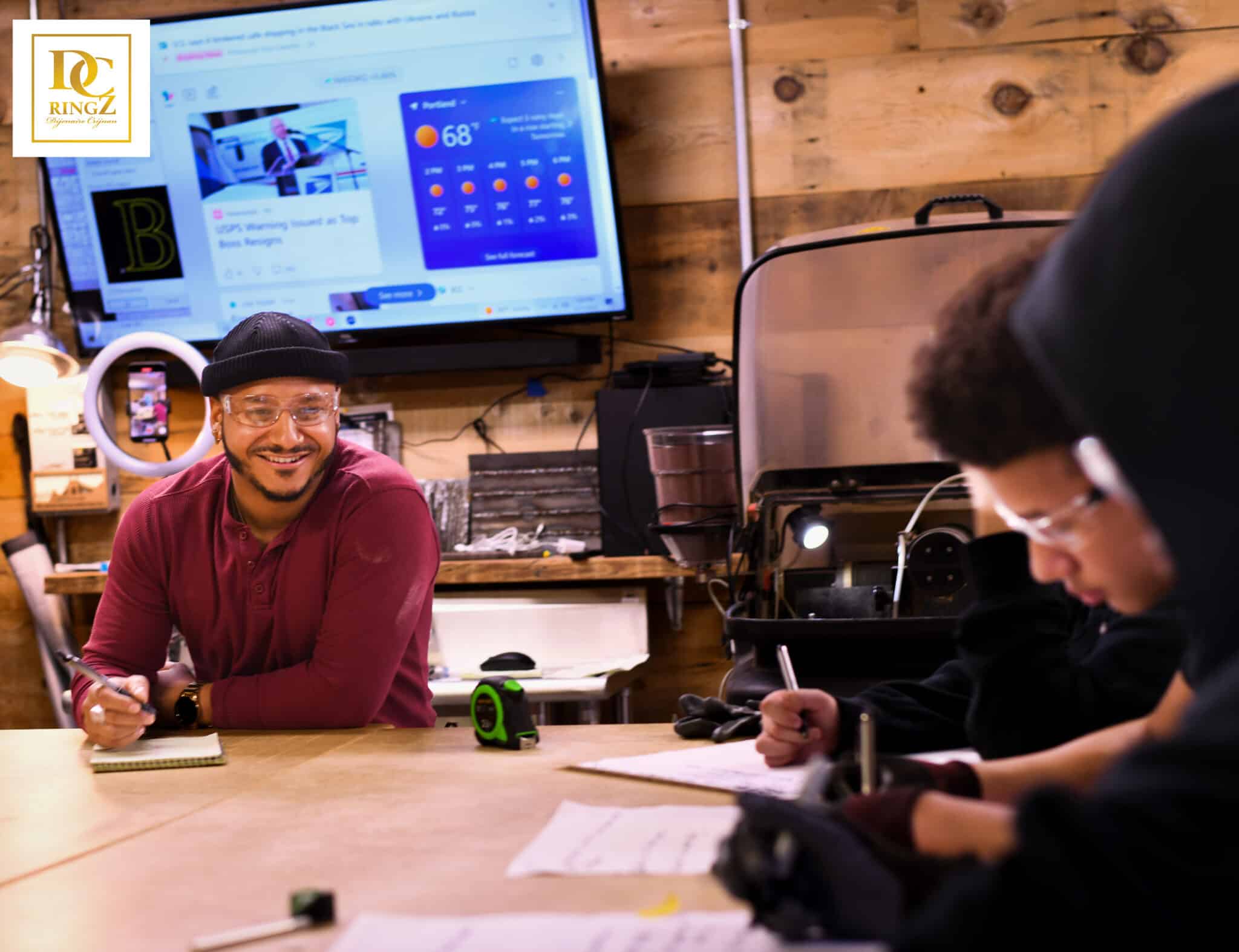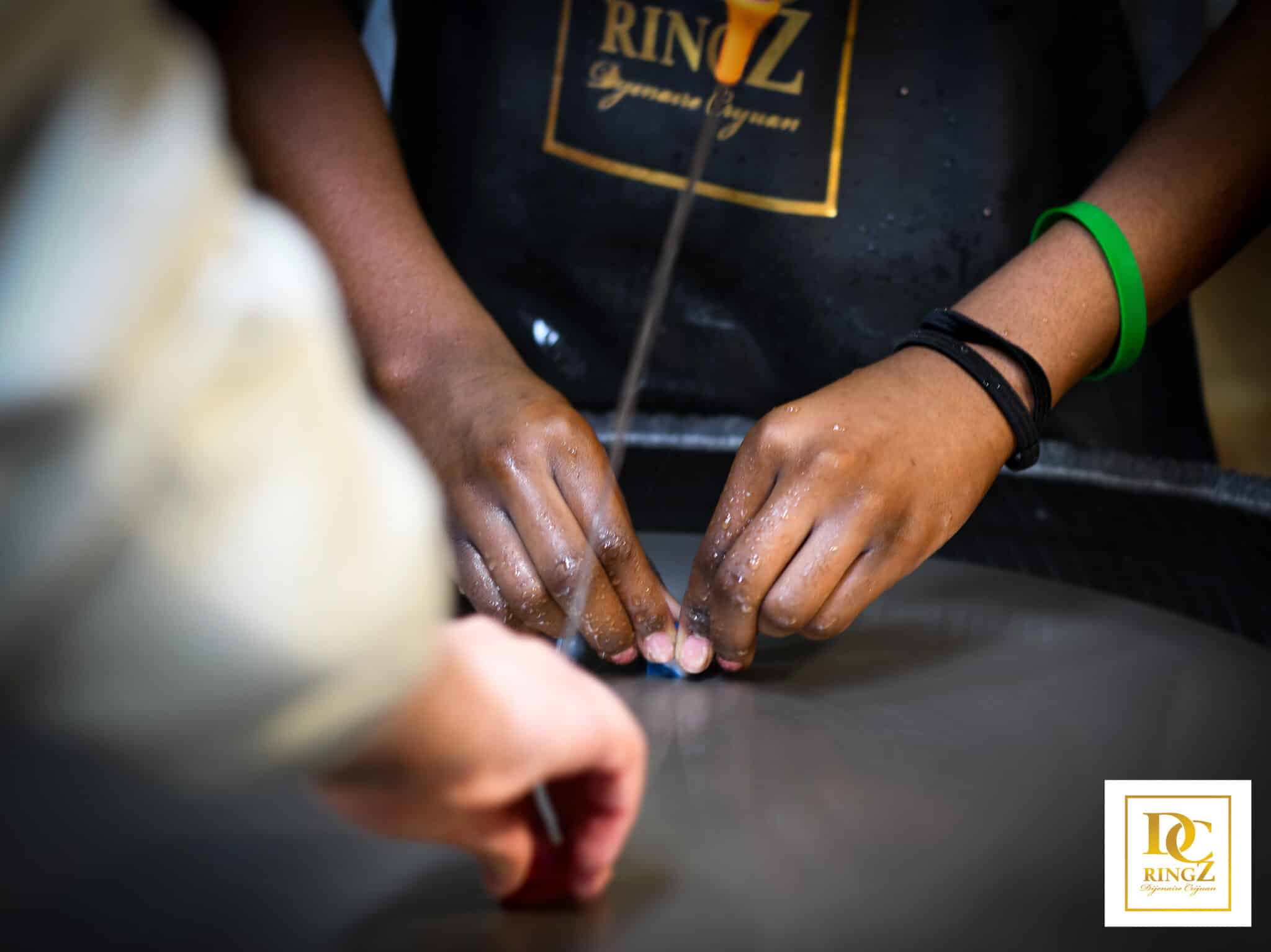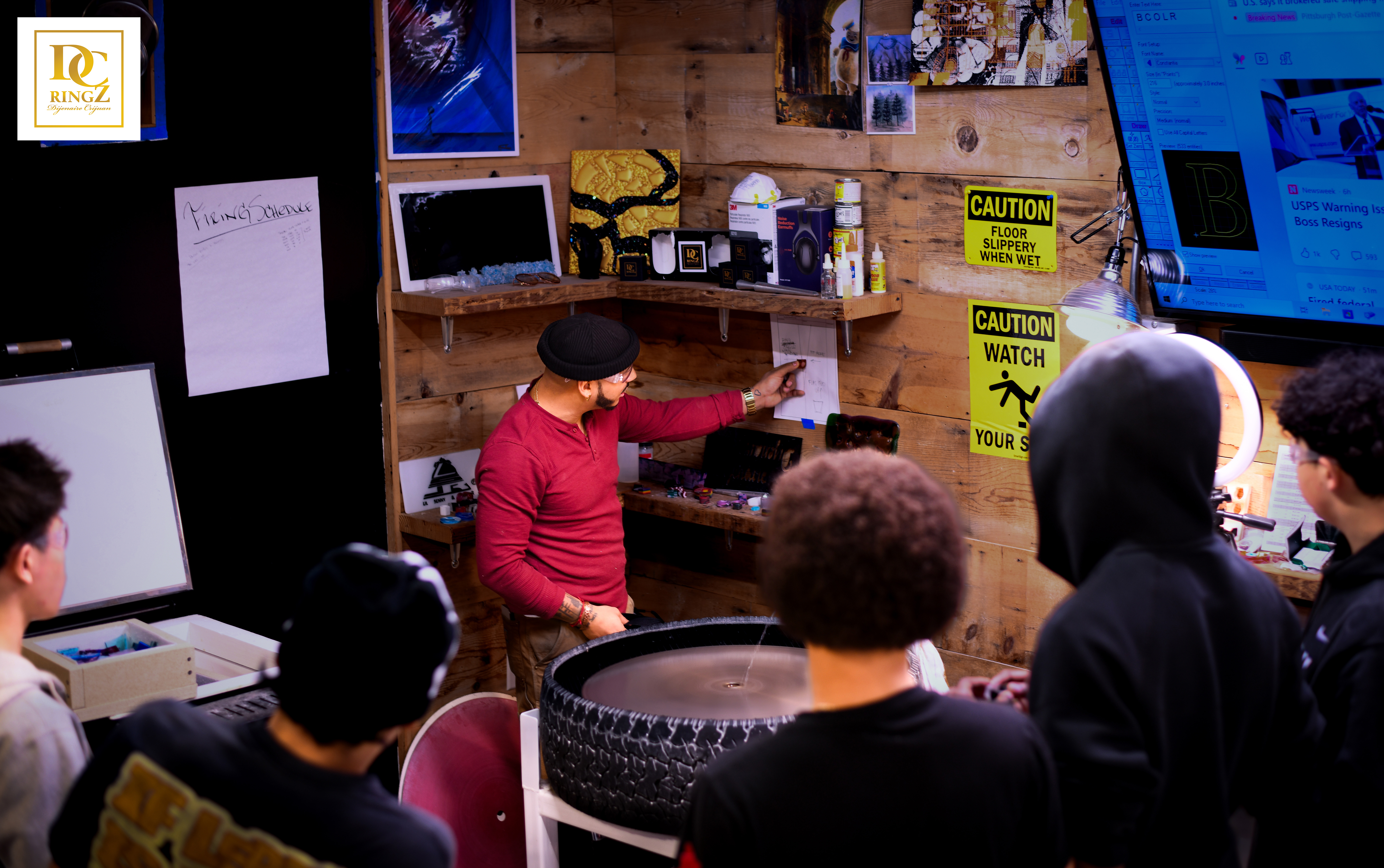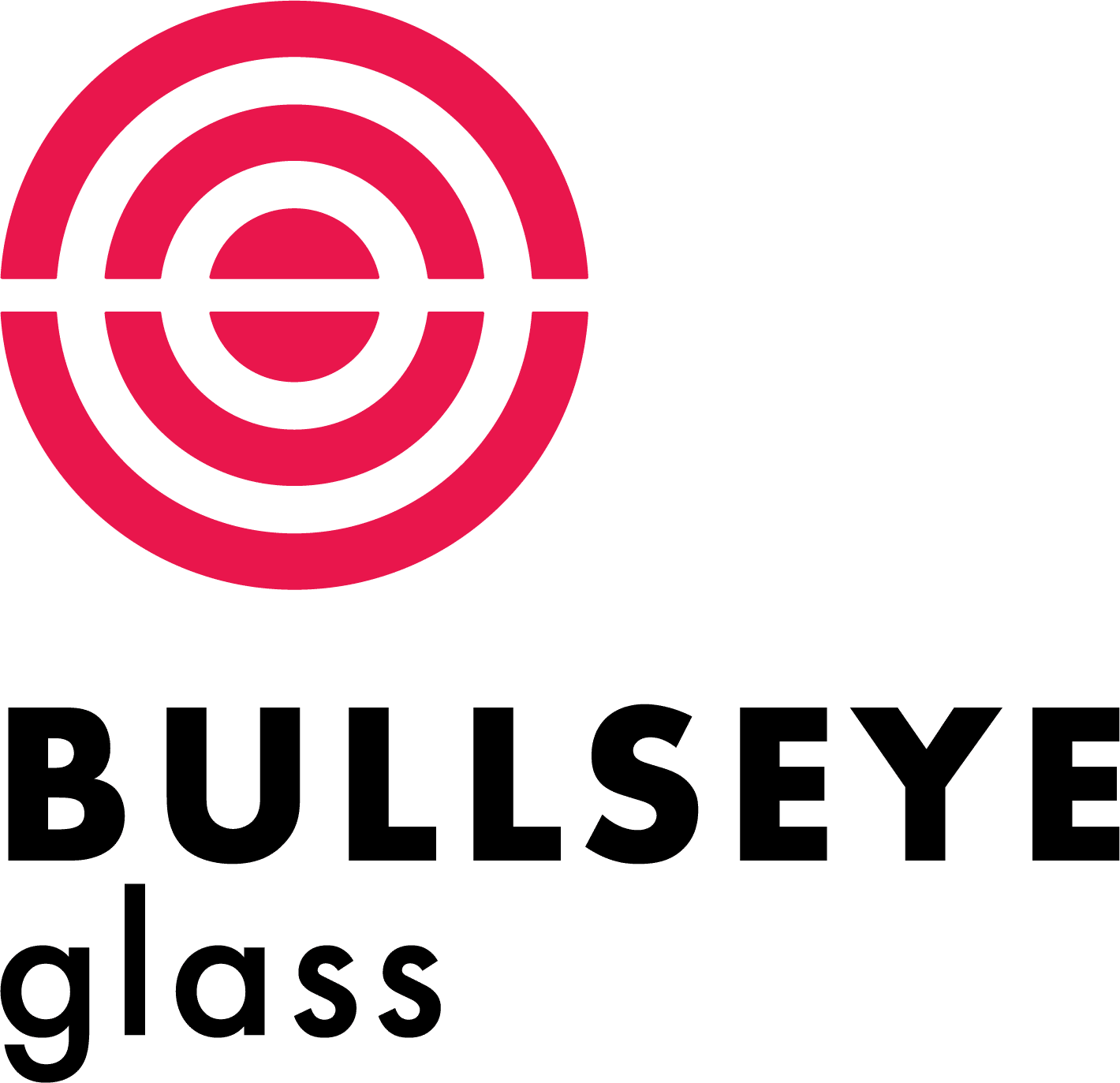
When Dijenaire Frazier visited Bullseye for a tour in 2013, he mainly saw one thing: pure potential.
Even though he’d grown up in Portland and considered himself an artist, he’d never thought of Bullseye or kilnforming before that day. But as he took in the factory, everything changed.
“I fell in love. It blew my mind. Here was this place making something totally new in the art world… and it had only started in 1974. In terms of art history, that’s pretty much yesterday. So I thought to myself, ‘Dude. You could step into something amazing the world still has yet to grasp. You could make pieces of art that no one ever has.’ I mean, come on. How often can you get in on the ground level of that kind of opportunity?”
Dijenaire applied for a job with sales almost immediately. Due to his lack of experience with glass, he was denied. Undeterred, he applied to be a caster. For his interview, Dijenaire—a long-time suit salesman at Nordstrom—showed up dressed immaculately in a full suit and tie. The bemused interviewer decided the job wasn’t a good fit. That was strike two. But Dijenaire wouldn’t quit. He applied again, grunging up his look and applying for the warehouse. This time, finally, he got a yes.
After a stint in the warehouse, Dijenaire worked his way through the factory, learning many angles of how the glass was made and used. Eventually, he found his way to the sales team at Resource Center Portland. “Now I had to learn how to work with the glass. I had to teach our customers how to use it. And that forced me into a whole new learning curve.”
Dijenaire began working with the material, making plates, table tops, and wall-mounted art. That was his practice for years until, just before Covid struck, he made a glass pinky ring and wore it to a Bullseye party. A well-known glass artist noticed the ring and warned him that glass didn’t like being in that shape and that glass rings would never work.
Hearing that did anything but discourage Dijenaire. “As soon as he said that I looked at my ring and thought ‘This idea is the one.’”

When Covid hit and he had extra time, Dijenaire went all in on glass rings. He launched an LLC, reached out to nonprofits for support, and secured a grant that provided entrepreneurial mentorship and a $29,000 loan with which he bought a waterjet machine. That investment cut labor time for each ring by about 90%. What had once been a slow, laborious manufacturing process now penciled as a viable venture.
But for Dijenaire, building a business was never just about scaling up. It was also about giving back.
“I grew up in North Portland and I’ve always tried to volunteer with kids who aren’t exposed to a ton of opportunities. With the rings business, it hit me that if I could figure this out, so could a young person who’d never seen themselves as an artist. Or a business owner. I wanted to show kids they could do it too, to get them believing they can shape their own future.”
That spark led to a collaboration with Portland’s Office of Violence Prevention (OVP), where Dijenaire began offering workshops to local teens. In his studio, they learned how to design rings, cut slabs, pour frit, and coldwork. Maybe more importantly, they also learned how to price their products, calculate profit margins, and present their work.
“We’d break it down: If five pounds of glass gives you 30 rings, and you sell each for $35—how much are you making? They’d do the math, and then they’d start to see it. The lights would go on.”
One student, showed up on the first day, brought three friends on the second, and asked if he could teach the ring-making process. When the OVP supervisor saw that kind of initiative, he was astounded. OVP was so impressed by the students’ response that they awarded Dijenaire a grant to support a full month of summer workshops.
For Dijenaire, the grant represents a special opportunity to expand his positive impact on Portland youth. But he also views it as a chance to impact the future of glass.

“A lot of people don’t get the opportunity to play with glass. So to be able to show our youth—and just people in general—what fused glass is? That’s huge. I’m trying to get a new generation of glass fusers going. The company needs it. The art world needs it. And right now this is the game plan: if I can influence some of these kids, to really help them see what they can do and how to build a vision… maybe we’ve got a whole new generation of glass artists coming soon.”
Thankfully, Dijenaire isn’t alone in his ambitions. Along with support from OVP and Bullseye, he’s putting together a team to help grow and market his brand. One new collaborator—a photographer and strategist—has taken the lead on storytelling and digital content. Early on, Dijenaire turned to her and said, half-joking, “Are you my Lani?”—referring, of course, to Bullseye’s co-owner and longtime cultural catalyst. The photographer didn’t get the reference. But later, after she’d met Lani, she came back and said approvingly, “Now I get it.”
With momentum building and a summer program on the way, Dijenaire is thinking big—just like he was back in 2013 when he walked into Bullseye and was captivated by all that pure potential. But these days he’s not just beholding the potential. He’s helping realize it—one ring, one story, one student at a time.
You can find Dijenaire’s work at dcringz.com and follow on Instagram.

